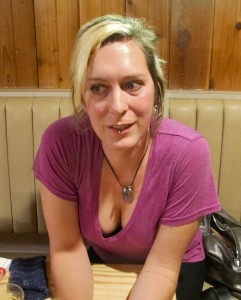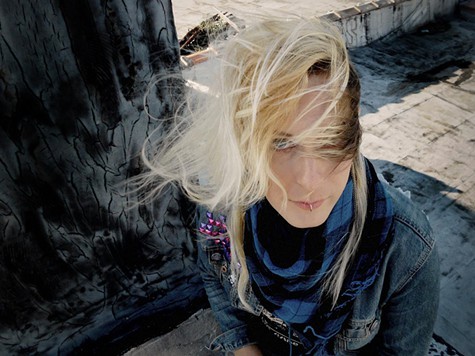
I almost don’t know how to engage with it. Instead, it’s grown into so much more than I could have anticipated, which is rad but very surreal. I always thought that after “Nevada” was published, people would forget about it, and then maybe someone would discover it and have their minds blown the way mine was when I read Kathy Acker or Dennis Cooper. I.B.: I had never been in a room full of queer weirdos before, and I was like, “Oh my God, I found my people.” I remember you at the conference, in the front row.

It gave me permission to be a weirdo, too. The texture was perfect, and your pencil was very sharp. I remember being fascinated: You were such a dirtbag, but you had this really nice drawing paper.

But then we were hanging out and I was watching you draw. I felt like a dumb baby because you seemed so cool. I.B.: It was like, “Give me anything,” right? When I met you in person, it was at the trans health conference in 2004. There were tropes of ourselves, but we weren’t actually the ugly cross-dresser, the murdered prostitute. All the dissociating and looking for yourself everywhere. That’s what was exciting about “Nevada” - when it came out in 2013, nobody had ever gone inside a trans person’s mind like that. My work is about analyzing transness, too. When I taught a drawing class a couple of years ago, I’d say that the body is basically a collection of different-size sausages arranged in different ways - all these weird bendy things.

That’s the science of drawing: You need to learn all the anatomical bits and the structure of things.

It was a little bit like being struck by lightning: “Someone out there is doing this thing that I don’t even know how to articulate that’s such a confrontation of all the things that feel impossible about being trans in 2003.” It was affectionate but also unafraid to be grotesque or hideous or beautiful. The way that you drew trans people was different from other portrayals I’d seen at the time, when there was so much trying to be invisible. I first found your art on in the early 2000s. Imogen Binnie: I was desperate for anything I could use to figure out how to be trans, and there was so much on and then LiveJournal.


 0 kommentar(er)
0 kommentar(er)
